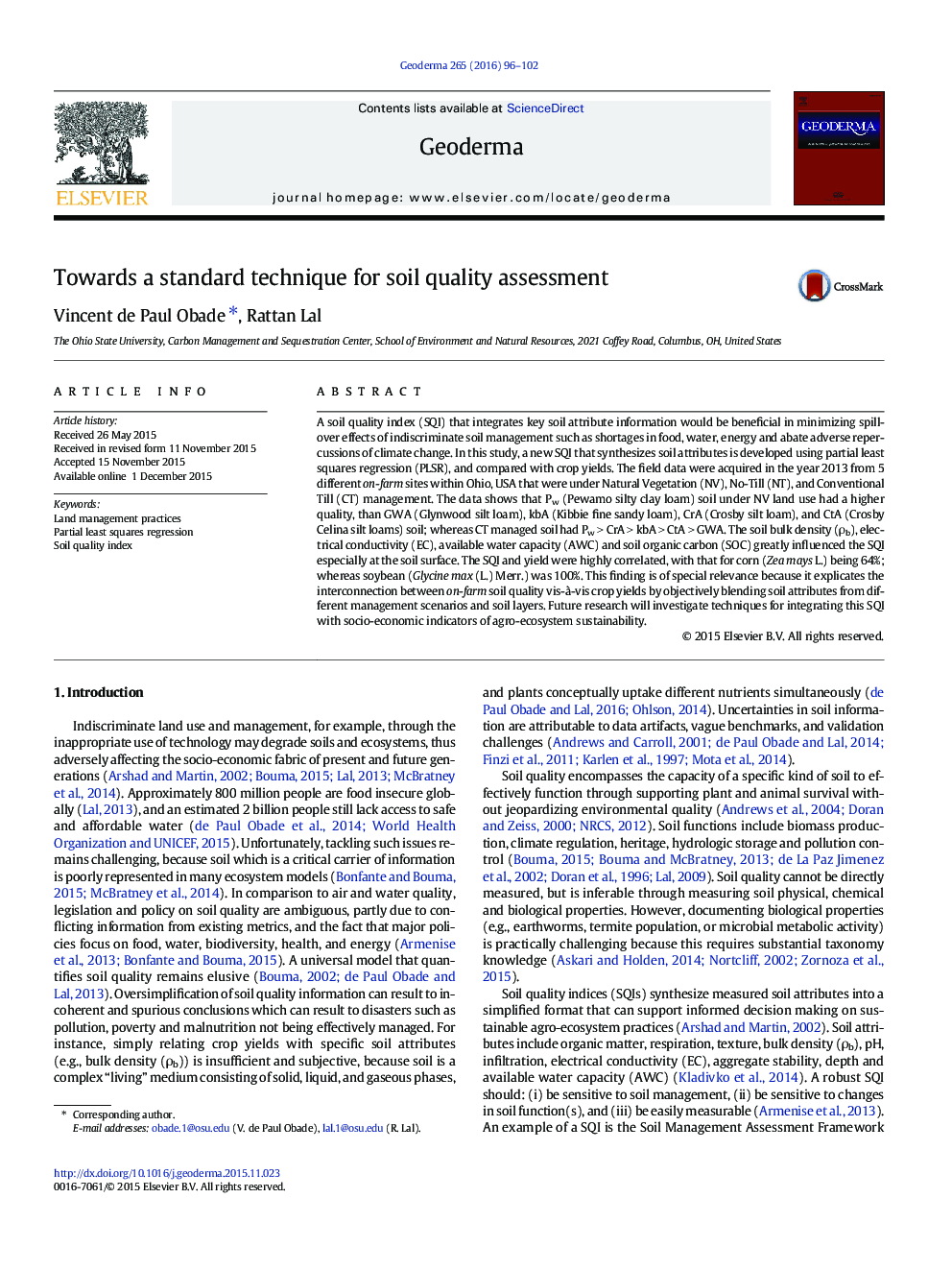| Article ID | Journal | Published Year | Pages | File Type |
|---|---|---|---|---|
| 6408430 | Geoderma | 2016 | 7 Pages |
â¢Partial least squares regression used to develop a new soil quality index (SQI)â¢PLSR accurately aggregates soil attributes into SQI.â¢SQI highly correlated with crop yieldsâ¢Crop yields higher in No Till managed soils than Conventional Till (CT)
A soil quality index (SQI) that integrates key soil attribute information would be beneficial in minimizing spillover effects of indiscriminate soil management such as shortages in food, water, energy and abate adverse repercussions of climate change. In this study, a new SQI that synthesizes soil attributes is developed using partial least squares regression (PLSR), and compared with crop yields. The field data were acquired in the year 2013 from 5 different on-farm sites within Ohio, USA that were under Natural Vegetation (NV), No-Till (NT), and Conventional Till (CT) management. The data shows that Pw (Pewamo silty clay loam) soil under NV land use had a higher quality, than GWA (Glynwood silt loam), kbA (Kibbie fine sandy loam), CrA (Crosby silt loam), and CtA (Crosby Celina silt loams) soil; whereas CT managed soil had Pw > CrA > kbA > CtA > GWA. The soil bulk density (Ïb), electrical conductivity (EC), available water capacity (AWC) and soil organic carbon (SOC) greatly influenced the SQI especially at the soil surface. The SQI and yield were highly correlated, with that for corn (Zea mays L.) being 64%; whereas soybean (Glycine max (L.) Merr.) was 100%. This finding is of special relevance because it explicates the interconnection between on-farm soil quality vis-à -vis crop yields by objectively blending soil attributes from different management scenarios and soil layers. Future research will investigate techniques for integrating this SQI with socio-economic indicators of agro-ecosystem sustainability.
